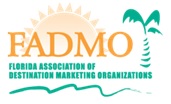
“We were disheartened today to hear that the more than 30-percent cut to funding of VISIT FLORIDA means they will have to cut payroll by more than $3 million, resulting in personnel cuts and job losses. [Read more…] about Statement by FADMO regarding looming job cuts at VISIT FLORIDA

